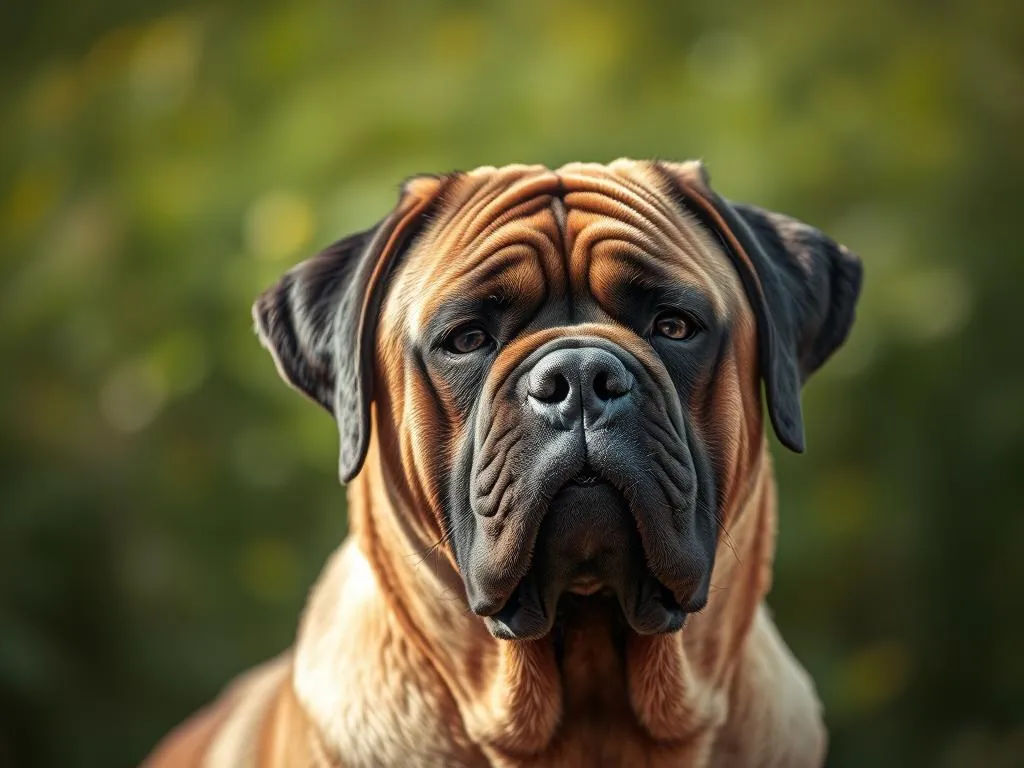
Introduction
Dog breeds encompass a diverse range of canine varieties, each with unique characteristics, traits, and histories. Understanding different breeds is crucial for potential pet owners, as it influences their choices regarding temperament, care requirements, and compatibility with their living situation. One breed that stands out for its impressive size and gentle demeanor is the English Mastiff.
The English Mastiff has a rich history that traces back to ancient times, revered for its strength, loyalty, and protective instincts. Known for their massive size and calm temperament, these dogs have garnered a devoted following among dog enthusiasts.
This article delves into the English Mastiff, providing comprehensive insights into its history, physical characteristics, temperament, health considerations, training needs, and care requirements. We will also compare this magnificent breed with other popular dog breeds, offering a well-rounded perspective for prospective owners.
History of the English Mastiff
Origin and Ancestry
The English Mastiff has roots that date back thousands of years, with historical evidence suggesting that similar breeds existed in ancient civilizations such as Mesopotamia, Egypt, and Greece. These dogs were often bred for their strength and courage, serving as formidable companions in battle and loyal guardians of property. The Mastiff lineage includes various breeds, such as the Tibetan Mastiff and the Neapolitan Mastiff, each contributing to the overall characteristics of the English Mastiff we know today.
Evolution Over Time
As breeding practices evolved, so did the English Mastiff. Originally bred for combat and guarding, the focus shifted towards companionship and family loyalty. Over time, these dogs have become known not only for their size but also for their gentle and affectionate nature. This transformation in temperament makes them excellent family pets, contrasting with their historic roles as fearsome guardians.
Recognition and Popularity
The English Mastiff was officially recognized by kennel clubs in the late 19th century, with the American Kennel Club (AKC) acknowledging the breed in 1885. Since then, the breed has gained tremendous popularity, particularly in the United States and Europe. Their impressive size and gentle demeanor have made them a favorite among families, leading to a resurgence in their presence in households today.
Physical Characteristics
Size and Weight
The English Mastiff is one of the largest dog breeds in the world. Adult males typically weigh between 160 to 230 pounds, while females range from 120 to 170 pounds. They stand around 27 to 32 inches tall at the shoulder, making them a commanding presence. Their sheer size often leads to comparisons with other large breeds, such as the Saint Bernard and Great Dane, although the English Mastiff tends to be bulkier and heavier.
Coat and Color
The coat of the English Mastiff is short and dense, providing a weather-resistant layer. Common color variations include fawn, apricot, and brindle. The brindle pattern features a mix of dark stripes on a lighter background, giving these dogs a unique appearance. Regular grooming helps to manage shedding, but their coat is relatively low-maintenance compared to other breeds.
Distinct Features
The English Mastiff is characterized by its broad head, muscular build, and powerful physique. Their facial structure includes deep-set eyes that convey a gentle expression, often surprising those who expect a more intimidating demeanor. The breed’s body proportions highlight their strength, with a broad chest and thick legs that support their impressive weight.
Temperament and Behavior
General Temperament
Despite their size, English Mastiffs are known for their calm and gentle temperament. They are typically affectionate and loyal, forming strong bonds with their families. While they can be protective, they are not aggressive by nature, making them suitable companions for families with children. In comparison to other large breeds, the English Mastiff is often more laid-back and less energetic, preferring a relaxed environment.
Socialization Needs
Early socialization is essential for the English Mastiff to ensure they develop into well-rounded adults. Exposing them to a variety of people, environments, and other animals helps to reduce fearfulness and behavioral issues. Regular outings, puppy classes, and playdates are great ways to promote positive interactions during their formative months.
Compatibility with Families and Other Pets
English Mastiffs are known for their compatibility with children, often displaying a gentle and patient demeanor. They tend to be protective of their family members, making them excellent watchdogs. When introduced to other pets, such as cats or smaller dogs, proper introductions and supervision are necessary. While many English Mastiffs can coexist peacefully with other animals, individual personalities will vary.
Health Considerations
Common Health Issues
Like many large breeds, the English Mastiff is prone to certain health issues. Common concerns include hip dysplasia, elbow dysplasia, and bloat (gastric torsion), which can be life-threatening if not treated promptly. Regular veterinary check-ups and being aware of these conditions are crucial for maintaining their health.
Preventative Care
Preventative care should include regular veterinary visits, vaccinations, and a balanced diet tailored to their size and age. Maintaining a healthy weight is particularly important for English Mastiffs, as obesity can exacerbate health issues common in the breed. Routine exercise, while moderate, is also beneficial for their overall well-being.
Lifespan and Aging
The average lifespan of an English Mastiff ranges from 6 to 12 years, with larger dogs generally having shorter lifespans. As they age, they may experience health challenges such as arthritis or decreased mobility. Providing a comfortable living space, regular veterinary care, and appropriate dietary adjustments can help improve their quality of life in their senior years.
Training and Exercise
Training Requirements
Training an English Mastiff requires patience and consistency. They respond best to positive reinforcement methods, such as treats and praise. Early obedience training is essential to instill good manners and ensure they understand basic commands. While these dogs are intelligent and eager to please, their independent nature may lead to stubbornness, necessitating a firm yet gentle approach to training.
Exercise Needs
English Mastiffs require moderate exercise to maintain their health, typically needing about 30 to 60 minutes of activity each day. Activities can include leisurely walks, play sessions, or even gentle fetch games. However, it’s important to avoid excessive exercise, particularly in hot weather, as their large size makes them susceptible to overheating.
Common Behavioral Issues
While English Mastiffs are generally calm, they can exhibit behavioral issues if not properly trained or socialized. Common challenges include stubbornness, excessive barking, and separation anxiety. Addressing these issues early on through consistent training and socialization will help prevent them from becoming problematic later in life.
Care and Maintenance
Grooming Needs
The grooming needs of the English Mastiff are relatively minimal. Their short coat requires brushing once a week to remove loose hair and dirt, while bathing should occur only as needed. Regular ear cleaning and dental care are also essential for maintaining their overall hygiene.
Feeding and Nutrition
Feeding an English Mastiff requires careful attention to their diet. Given their size, it’s essential to provide high-quality dog food that meets their nutritional needs. A typical feeding schedule involves two meals per day, with portion sizes adjusted to maintain a healthy weight. Consulting with a veterinarian regarding specific dietary requirements can help ensure optimal health.
Living Environment
English Mastiffs thrive in spacious environments, making them better suited for homes with yards rather than apartments. They can adapt to various climates, but it’s essential to provide adequate shelter in extreme weather conditions. While they enjoy spending time outdoors, they also value companionship and should have ample time indoors with their families.
English Mastiff in Popular Culture
Representation in Media
The English Mastiff has made notable appearances in various films and television shows, often depicted as loyal companions or gentle giants. Their impressive size and calm demeanor have captured the hearts of audiences, leading to increased interest in the breed.
Famous English Mastiffs
Several famous English Mastiffs have left their mark in history, with some serving as symbols of loyalty and protection. Their notable presence in popular culture has contributed to the breed’s appeal, making them a beloved choice for many dog enthusiasts.
Cultural Significance
Throughout history, English Mastiffs have held significant roles in various cultures, often associated with nobility and protection. Their stature and loyalty have made them symbols of strength and guardianship across different societies, solidifying their place in the hearts of dog lovers worldwide.
Conclusion
The English Mastiff is a remarkable breed known for its size, gentle temperament, and loyalty. Understanding their history, physical characteristics, temperament, health considerations, training needs, and care requirements is essential for anyone considering welcoming one into their home.
While they may require specific care and training, the rewards of having such a devoted companion are immeasurable. For prospective owners, thorough research and consideration of lifestyle compatibility with the breed are key to ensuring a harmonious relationship.
As you explore the world of dog breeds, the English Mastiff stands out as a unique and loving choice, combining strength and gentleness in a way that makes them truly special.









